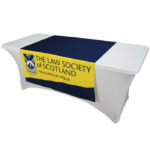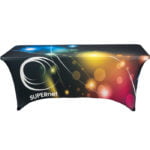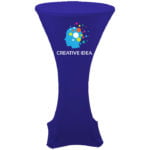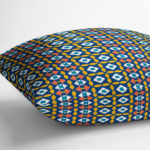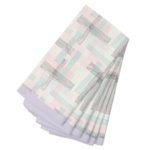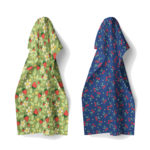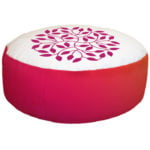What is metamerism? 4 ways to avoid this colour problem when textile printing.

In the world of textile printing metamerism is a crucial, yet often misunderstood, phenomenon that significantly influences how colours are perceived in fabrics. This poses challenges for designers and manufacturers. Here, we unravel the essence of the phenomenon, breaking it down into its simplest form for clarity and practical understanding.
The Basics of Metamerism
Metamerism occurs when two colours, which appear identical under a particular light source, change their appearance under a different light. This phenomenon is not a property of the colour itself, but a result of the interaction between light, the observer, and the textile material.
The root lies in the science of light and colour perception. Colours are perceived based on the light they reflect. Different light sources – be it sunlight, fluorescent, or LED light – have varied spectral compositions. When light interacts with a textile, specific wavelengths are absorbed and others are reflected, which our eyes then interpret as colour.
Implications in Textile Printing
A fabric’s colour can look different in the store, at home, or outdoors, depending on the light source. This can be problematic for fashion designers, interior decorators, and consumers, who expect colour consistency.
For example, a printed garment might match accessories in the artificial light of a retail store but appear mismatched in daylight. Similarly, upholstery that seems to coordinate perfectly in a showroom might clash in a home’s different lighting environment.
How we try to reduce metamerism
- Light Booths: These are used to simulate different lighting conditions and help predict how colours will look in various environments. By asking you about the intended use of your printed textile product we can better help evaluate any issues and address them.
- Spectral Analysis: We are fully equipped with advanced spectrophotometers. These laboratory grade pieces of equipment in trained hands allow us to analyse how fabrics absorb and reflect different wavelengths. This aids the prediction of potential metameric failures. This process also allows us to ‘tune’ the colour profile used for each individual fabric to achieve better colour consistancies across fabrics.
- Colour Matching Systems: These systems such as Pantone or RAL help by specifying colours in a way that helps maintain consistency across different lighting conditions and surfaces. E.G.; when matching say a cushion to a wall paint.
- Education and Awareness: Fortunately for many applications the problem is more theoretical, but our highly trained staff’s knowledge allows us to identify possible issues and work with you the designer or client to address them.

In Summary
Metamerism in textile printing is an intriguing optical phenomenon that poses unique challenges in colour consistency. By understanding and utilising tools and strategies to anticipate and address these challenges, we can better manage colour perception under varying lighting conditions. This not only enhances the quality of the printed textiles but also ensures customer satisfaction through consistent and reliable colour representation.
One of the simplest ways to start your journey towrads getting printed colours on fabrics that mathc the expectations on your screen is to order a fabric printing colour sample pack which includes 30+ fabrics with a textile printing colour chart.
Want to learn more? Here are some helpful links.
https://www.xrite.com/blog/what-is-metamerism
https://www.coats.com/en/information-hub/differentiating-metamerism-and-illuminants
https://www.advancetextile.net/2023/04/metamerism-in-textiles.html
Sign up to receive monthly product updates
No Spam. Just new product updates, helpful tips, and special offers. Tailored to your interests.



